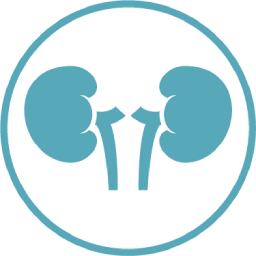Association of miRNAs with
Other Disease
what is
Other Disease?

…
Association of miRNAs with Other Disease
Project.1 Natural products have been of much interest in research studies owing to their wide pharmacological applications, chemical diversity, low side effects, and multitarget activities. The anti-carcinogenic effects of these products are partly mediated through modulation of miR-21 expression. To date, numerous downstream targets of miR-21 have been recognized, which include phosphatase and tensin homolog (PTEN), ras homolog gene family member B (RHOB), phosphoinositide 3-kinase/protein kinase B (PI3K/Akt), programmed cell death 4 (PDCD4), signal transducer and activator of transcription (STAT)-3, and nuclear factor kappa B (NF-κB) pathways. These signaling pathways, their regulation by oncomiR-21 in cancer, and the modulating impact of natural products are the main focus of this review.
Regulation of microRNA-21 expression by natural products in cancer. Shakeri A, Ghanbari M, Tasbandi A, Sahebkar A.
Phytother Res. 2021 Jul;35(7):3732-3746. doi: 10.1002/ptr.7069.
Project.2 In this review, we discuss current knowledge of miRNAs regulatory role in cell cycle progression of stem cells. We describe how specific miRNAs may control cell cycle associated molecules and checkpoints in embryonic, somatic and cancer stem cells. We further outline how these miRNAs could be regulated to influence cell cycle progression in stem cells as a potential clinical application.
Cell Cycle Regulation of Stem Cells by MicroRNAs. Mens MMJ, Ghanbari M. Stem Cell Rev Rep. 2018 Jun;14(3):309-322. doi: 10.1007/s12015-018-9808-y.
Project.1 Circulating levels of 2083 miRNAs were measured by RNA-sequencing in plasma samples of 1999 participants from the Rotterdam Study collected between 2002 and 2005. Full blood count measurements were performed for absolute granulocyte, platelet, lymphocyte, monocyte, white and red blood cell counts. Multivariate analyses were performed to test the association of miRNAs with blood cell compositions and immune markers. First, principal component regression analysis showed that plasma levels of circulating miRNAs were significantly associated with red blood cell, granulocyte, and lymphocyte counts. Second, cross-sectional analysis identified 210 miRNAs significantly associated with neutrophil-to-lymphocyte ratio (NLR), platelet-to-lymphocyte ratio (PLR), and systemic immune-inflammation index. Further genetic look-ups showed that target genes of 7 identified miRNAs (miR-1233-3p, miR-149-3p, miR-150-5p, miR-342-3p, miR-34b-3p, miR-4644, and miR-7106-5p) were also previously linked to NLR and PLR markers. Collectively, our study suggests several circulating miRNAs that regulate the innate and adaptive immune systems, providing insight into the pathogenesis of miRNAs in immune-related diseases and paving the way for future clinical applications.
Plasma circulating microRNAs associated with blood-based immune markers: a population-based study. Clin Exp Immunol. 2023 Nov 9:uxad126. doi: 10.1093/cei/uxad126.
Project.1 We used genotyping and hospital records data in the UK Biobank (N = 423,419) to investigate associations between 346 genetic variants in miRNA-related sequences and a wide range of clinical diagnoses through phenome-wide association studies. Further, we tested whether changes in blood miRNA expression levels could affect disease risk through colocalisation and Mendelian randomisation analysis. We identified 122 associations for 6 variants in the seed region of miRNAs, 9 variants in the mature region of miRNAs, and 27 variants in the precursor miRNAs. These included associations with hypertension, dyslipidaemia, immune-related disorders, and others. Nineteen miRNAs were associated with multiple diagnoses, with six of them associated with multiple disease categories. The strongest association was reported between rs4285314 in the precursor of miR-3135b and celiac disease risk (odds ratio (OR) per effect allele increase = 0.37). Colocalisation and Mendelian randomisation analysis highlighted potential causal role of miR-6891-3p in dyslipidaemia.
Follow US
on These Social Media or Websites












